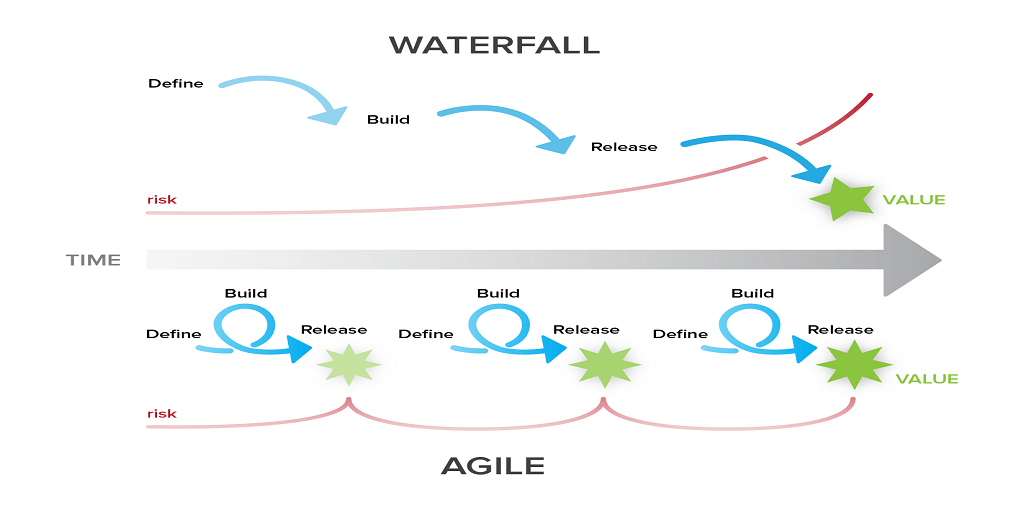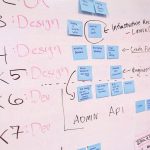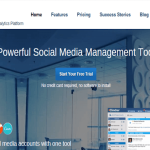Should you use Agile project management or Waterfall method? Which one is a better fit for your projects? This article is about Agile vs Waterfall and which one is the right one for your projects.
Waterfall uses work breakdown structure (WBS) and agile is an iterative design process. If you do a Google search on agile vs. waterfall, you will find 16.500,000 entries. Finding the right answer is not easy.
But my answer below may surprise you! You see, there is more to project management than Agile and Waterfall.
There is a new and better method known as hybrid project management which is gaining popularity not only in software industry but in other fields like development, digital marketing, construction and manufacturing.
Like all things in life, one solution does not fit all. There are projects which the quickness of agile is considered the best fit. For other projects, The thoroughness of waterfall project management is considered to be ideal .
But the majority of projects by far benefit from combined quickness and thoroughness of hybrid project management method. In this paper I cover Agile vs. waterfall and recommend which type of project management methodology is suited for your projects.
Agile vs Waterfall
Waterfall is a sequential product management process. Agile is an incremental and iterative product development process.
In waterfall the final product is envisioned and known at the beginning. In Agile as result of new market or technology input, the final product changes during development.
In waterfall when one step is finished, there is a huge cost to go back and fix if problems are found later. Agile by nature is flexible, so issues found could be fixed in the next sprint.
In Waterfall the initial requirement is the king. If a fault is found with requirements in the middle of design, the project is doomed. In agile requirements are assumed to be flexible and changing. Extensive potential changes in requirements are baked in the process.
In Waterfall the product is tested only at the end, which is a huge risk. In Agile each iteration is tested and qualified before moving forward.
In Waterfall, the client’s needs are assumed to be static and not changeable (a very bad assumption). In Agile, it is assumed the client’s need are dynamic and could change during the project’s life cycle.
Why Hybrid?
Both Waterfall and Agile project management methodologies have their strengths and weaknesses. Waterfall encourage meticulous planning, record keeping and monitoring.
The client has a good understanding of the final result before the project starts. In case of shit happening like employees turnover or vendors being late on parts, the planning and documentation saves the day.
On the other hand, Agile allows requirement changes during project’s life cycle. New features could be added with minimum disruption in the project.
At end of each sprint, everything is evaluated and readjusted. The testing for each sprint helps to find all issues during development and fix them before the product is shipped.
So seems Agile is the right way to go, right? Well not always! Some projects are better fit for Waterfall than Agile.
The good news is that there is a new project management methodology called Hybrid is more effective than both Agile and Waterfall for many projects.
In my work experience working on hundreds of projects, Hybrid is the most effective project management methodology for most projects. You may ask why?
The answer is simple. Hybrid combines the best of Waterfall and Agile approaches and avoids the disadvantages of both. You get all the benefits of Agile and waterfall and reduce or eliminate the disadvantages of both methods.
I have written about benefits of Hybrid project management method extensively. Very Small projects should always use agile project management method.
Large projects which have fixed outcome and requirements and are extensively documented (I don’t know too many projects of this type except in government, defense and healthcare industries) can use Waterfall.
But even those projects are better off with Hybrid project management method. Most projects should use Hybrid project management methodology.
Experience has shown that when the project manager is experienced the outcome of Hybrid approach is far superior to other two methods. Is it hard to learn Hybrid method? Not really! Hybrid approach by nature is common sense.
If you have experience in either Agile or waterfall project management, in no time you can become very good in hybrid method.
The advantage of Hybrid project management compared to agile and waterfall are well documented as this research paper from university of Virginia school of management shows.
If you are new to project management and have been investigating Agile vs Waterfall methods, I strongly urge you to consider the hybrid project management too.
The question should not be Agile vs Waterfall? but should be Agile vs Waterfall vs Hybrid?
The good news is that Binfire project management software supports Agile, Waterfall and hybrid project management methods.
So regardless of which approach you choose, Binfire has the tools you need to bring your projects to completion on time and on budget. We have done almost fifty projects using Hybrid method and the results have been nothing short of amazing.
Give Hybrid project management a try and let me know about you experience. If you have questions about this Hybrid method, contact me. I will be more than glad to answer your questions or discuss your ideas.





Pingback: Project Management software - Collaboration Corner
Pingback: Project Management software - Collaboration Corner
Pingback: Project Management software - Collaboration Corner
Pingback: Project Management software - Collaboration Corner
Pingback: Project Management software - Collaboration Corner
Pingback: compare corner waterfall – Shop for Gifts
Pingback: compare corner waterfall – Shop for Gifts
Pingback: compare corner waterfall – Shop for Gifts
Pingback: compare corner waterfall – Shop for Gifts
Pingback: compare corner waterfall – Shop for Gifts